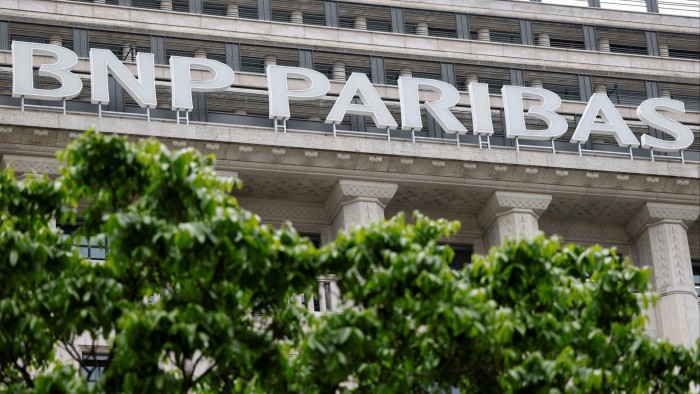Unlock the White House Watch newsletter for free
Your guide to what Trump’s second term means for Washington, business and the world
Traders at Europe’s largest investment banks delivered their highest quarterly revenues in at least a decade, after the Trump-induced volatility in financial markets sparked a frenzy of activity on both sides of the Atlantic.
UBS, BNP Paribas, Société Générale, Barclays and Deutsche Bank in recent weeks reported a combined €13bn in revenues from equities and fixed income trading between January and March, the highest combined quarterly total for the five lenders since at least 2015.
The performance by European banks mirrors the stellar trading returns posted by US peers during the first three months of the year, with Wall Street’s five largest banks reaping almost $37bn in combined trading revenues during the period.
Since returning to the White House in January, Trump has ushered in a period of economic uncertainty, triggering wild swings in stock, bond and currency markets that have created opportunities for traders to exploit.
“Market volatility is broadly supportive of global market businesses for banks, as is the case for us,” SocGen chief executive Slawomir Krupa told analysts. “The disruption is manageable for everybody from a macro perspective.”
The first quarter of 2025 produced a record performance at the markets divisions of UBS and BNP Paribas. The Swiss lender’s trading revenues jumped by nearly a third to $2.5bn (€2.3bn) compared with the same period a year earlier, while France’s largest bank posted an all-time high of €2.8bn in trading revenues during the quarter.

Deutsche Bank — which no longer has an equities trading business — and Barclays reported a surge of 17 per cent and 21 per cent respectively in fixed income, currencies and commodities (FICC) trading compared to the first quarter in 2024, outperforming all Wall Street lenders in percentage gains in FICC during the period.
SocGen’s trading performance was driven by its equities business, where revenues rose by more than a fifth on the previous year to €1.06bn, while its fixed income division saw a slight decline.
After producing meagre returns and shareholder payouts for much of the last decade, European lenders have seen a turnaround in their fortunes in recent years, with higher interest rates boosting their net interest income — the difference between the interest banks receive from borrowers and pay out to depositors.
However, banks’ trading divisions have also benefited from bouts of market volatility, starting with the Covid-19 pandemic in 2020. This was followed by significant market swings in early 2022 after Russia launched its invasion of Ukraine and central banks rapidly increased interest rates.
Before the most recent quarter, the first three months of 2022 held the crown as the quarter with the highest trading revenues for European banks since at least 2015, with the five banks producing €12.8bn in combined revenues during that period. Credit Suisse was also a significant player in equities and FICC trading in Europe before its demise in 2023.
Sergio Ermotti, UBS’s chief executive, said last week that the Swiss lender had seen “a huge spike in client activity and volatility” at the start of the second quarter after Trump announced a raft of “reciprocal” tariffs on April 2, triggering a market sell-off.
“On some days, trading volumes exceeded their Covid-era peak by around 30 per cent,” he said, describing the activity levels as “quite exceptional”.
Andrew Coombes, an analyst at Citigroup, said: “This bodes well for [second quarter] markets revenues, following on from strong equities and FICC results in [the first quarter].”
“[Ermotti] did however confirm that there is now a degree of investor fatigue and it’s since returned to a more normalised trading environment,” Coombes added.


